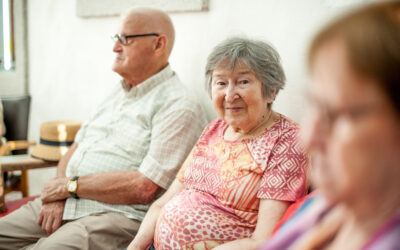 Subscribers Only
People
Subscribers Only
People 
Welsh Government action is needed to improve outcomes for women with heart disease, says Gemma Roberts, Policy and Public Affairs Manager at British Heart Foundation Cymru
Wales has the second highest coronary heart disease female death rate of the UK’s four nations. This translate to around 1,300 women dying every year – that is twice as many deaths as breast cancer. Evidence shows that women experiencing a heart attack face unconscious bias and disadvantage at every stage of the patient pathway. Welsh Government action is needed to close the heart attack gender gap and ensure equitable cardiac care for everyone in Wales.
Women are not seen as being at risk of heart attacks
Each year, around 1,700 women are admitted to hospitals in Wales due to a heart attack.1 A 2021 BHF Cymru survey of 1000 people in Wales showed that women are not seen as being at risk of heart disease by the Welsh public. 65% of people in Wales are unable to identify heart disease as one of the leading causes of death for women.2 The same survey found that over a third of women in Wales do not feel confident in recognising the symptoms of a heart attack and only 7% feel very confident.3 As women are not seen by the people of Wales as being at risk of heart attacks, when women do experience the symptoms of a heart attack their symptoms might not be taken seriously by themselves or those around them. Women experiencing a heart attack tend to present later than men. If the people of Wales do
not recognise women as at risk of a heart attack, women’s symptoms may be misinterpreted or not taken seriously. Patients we spoke to who had experienced a heart attack informed us that they and their families had initially dismissed their symptoms as a panic attack. This, however, is only a part of the picture. Societal bias and the perpetuation of traditional gender roles may cause women to prioritise others over themselves, experience barriers to accessing care, or be fearful and embarrassed.4
Women are more likely to be diagnosed slowly or misdiagnosed
Women not being seen as at risk of heart attack can impact whether a woman presenting with heart attack symptoms receives a timely and correct diagnosis which could increase the risk of death and limit the chance of a full recovery.5 Research suggests that women are 50% more likely than men to receive the wrong initial diagnosis for a heart attack 6 and BHF-funded researchers at the University of Leeds found that women are referred for diagnostic testing much more slowly than men.7 We spoke to women with experience of a heart attack, and some told us that clinicians have previously misdiagnosed them with anxiety or a panic attack. This is likely due to the misperception that women are not at risk of heart attacks which also exists in clinical settings.
Women are less likely to receive optimal treatment
Not receiving optimal treatment can lead to another heart attack and, in some cases, death. A clinical trial in Edinburgh found that even when diagnosis in women is improved, sex inequalities in treatment persist and women are around half as likely as men to receive the recommended treatment.8 Research funded by BHF at the University of Leeds suggests that women are less likely to receive optimal treatment and the deaths of at least 8,000 women could have been prevented through equitable cardiac treatment over a ten-year period (2003-2013) in England and Wales.9
Women are more likely to experience difficulty accessing cardiac rehabilitation
Cardiac rehabilitation has been proven to reduce the chances of further complications after a heart attack, improve quality of life, and improve patient recovery. female participation rates are lower than those of men, despite recent attempts to recruit more women’. Just because NACR doesn’t specify what ‘good’ participation levels are, and because less than 50% of both men and women started cardiac rehab in the 2020 data.10 Flexibility in cardiac rehabilitation provision may be key for inclusivity. Although we
understand NHS capacity is limited, there are simple ways to provide person-centred cardiac rehabilitation to ensure women are supported to have the best possible outcome following a heart attack.
What should be done?
Welsh Government has committed to a women’s health quality statement. We need to ensure that this statement addresses inequalities experienced by women with heart disease. The quality statement should seek to improve outcomes for women with heart disease through:
1. Improved public awareness
2. Timely diagnosis
3. Equitable treatment
4. Equitable access to cardiac rehabilitation
1Digital Health and Care Wales (2020). via correspondence.
2YouGov Plc. Total sample size was 1007 adults. Fieldwork was undertaken between 10th – 14th June 2021. The survey was carried out online and results have been weighted for the Welsh adult population.
3YouGov Plc. Total sample size was 1007 adults. Fieldwork was undertaken between 10th – 14th June 2021. The survey was carried out online and results have been weighted for the Welsh adult population.
4Nguyen, H. L., Saczynski, J. S., Gore, J. M., et al. (2009). Age and sex differences in duration of prehospital
delay in patients with acute myocardial infarction: a systematic review. Circulation Cardiovascular Quality and Outcomes. Journal of the American Heart Association. https://bit.ly/3kusLnB
5Wu, J. et al. (2016). Impact of initial hospital diagnosis on mortality for acute myocardial infarction: A national cohort study. European Heart Journal. Acute Cardiovascular Care. https://bit.ly/39wMA8S
6Ibid.
7Wilkinson, C., Bebb, O., Dondo, T. B., et al. (2018). Sex differences in quality indicator attainment for
myocardial infarction; a nationwide cohort study. Heart. https://bit.ly/2VXfgV4
8Kuan, K. L. (2019). Sex-Specific Thresholds of High-Sensitivity Troponin in Patients with Suspected Acute
Coronary Syndrome. Journal of American Cardiology. https://bit.ly/37Ri0pI
9Wilkinson, C., Bebb, O., Dondo, T. B., et al. (2018). Sex differences in quality indicator attainment for
myocardial infarction; a nationwide cohort study. Heart. https://bit.ly/2VXfgV4
10BHF. (2019). National Audit of Cardiac Rehab (NACR) Quality and Outcomes report 2021.
https://www.bhf.org.uk/informationsupport/publications/statistics/national-audit-of-cardiac-rehabilitation-quality-and-outcomes-report-2021#


